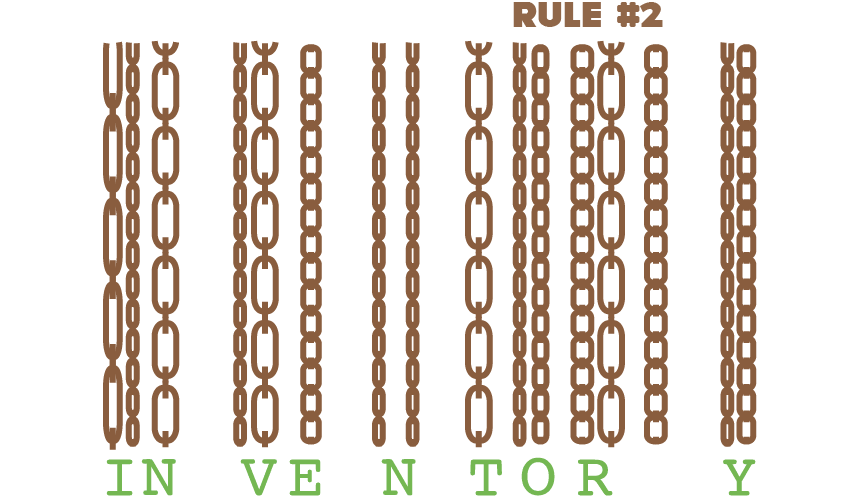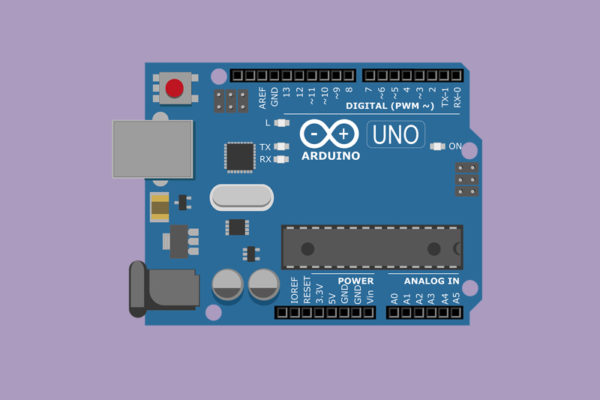
It Takes Lots Of Cash To Stay In Stock
One of the surprising prices of success is how much it costs! Obviously you’ve got to buy your parts and pay for the manufacturing before you can sell your product and make the money back, and the time between those two can be measured in many months if not years.
Likewise, if your product has many components, you’ve got to have a healthy inventory of all of them, with a large buffer in case any one of them become hard to find or there is a delay in shipping them to you.
One of the first hard lessons Makers learn when they go into business is that their supply chain is only as strong as the weakest link.
If you’re out of one component, you can’t ship your product. For the want of one chip or bolt, your entire business can grind to halt.
“Out of stock” is the curse of the maker industry. Because most of us are new to manufacturing, we don’t get our supply chains and component inventory right.
We don’t order components early enough and in enough volume. We don’t keep a database of our components to ensure that we’ve got the right number of all of them and get warnings when they’re running low. And we’re loath to spend tens of thousands of dollars on parts that just sit on the shelf until they’re used—it feels like dead capital, and it can add up.
But that’s the cost of small batch manufacturing. We’re not ordering in large enough volume to get just-in-time service from suppliers. We have to create our own component buffers, and that invariably means boxes and boxes of parts, just waiting around to be used if and when demand arises. It feels wasteful, but the alternative is worse: Frustrated customers who can’t understand why products are constantly out of stock and eventually move on.
Depending on your business, you should expect components to take between a month and six months to arrive, and even that’s assuming you have a good enough tracking system that you could track sales velocity and order them at the right time.

Why so long? In the case of electronics components, manufacturers in Asia are cutting capacity and many of the third-party distributors who served as a supply buffer in the industry have gone out of business in the recession, meaning that many parts have a six month lead time if you can get them at all. Other parts need to be custom manufactured and so you need to order in large batches, making your component ordering “lumpy,” with one or two big orders a year, rather than smaller ones each month.
Say that you calculate that to ensure that you’re in stock at all times, accounting for the vagaries of supply, you’ll need an average of three month’s worth of components on hand. And say that your components represent 80% of your costs. That means that your component inventory should be at least 10% of your annual sales (a quarter of a year times 80% times your cost, divided by your 2.3x profit margin).
In reality, you won’t be nearly that efficient in your ordering, mostly because of the need to order in bigger batches than your demand can really justify, to get volume discounts (see next rule).
Most maker businesses that I’ve talked to have to hold parts inventory closer to 25% of their annual sales. In the case of the successful businesses like MakerBot that can amount to tens or hundreds of thousands of dollars of circuit boards, motors and power supplies sitting in racks waiting to be used, and even then MakerBot was still forced to sell their 3D printers in batches, with customers often waiting a month or more for all the components to arrive so the kits were complete and could be shipped out.
(Fortunately, as MakerBot’s volume has increased, they’ve been able to smooth out their supply better, and delays are shrinking.)
In our own business of aerial robotics, we are never in stock of all our products (we have nearly 100) at any time. It’s been a source of constant frustration for both us and our customers, and perhaps the greatest challenge we’ve had as a business.
We’ve got nearly $50,000 in electronics components sitting on the shelf, but invariably there’s one that has suddenly proven hard to find or demand for one product that has jumped faster than we expected. Just like that, an entire product line goes out of stock. Even worse, manufacturers in the electronics industry are constantly upgrading their products, and we sometime find that a key part in one of our boards is no longer made, forcing us to redesign the board, which means both unexpected delay and having to trash our existing stock of PCBs for that product.
Electronics may be one of the hardest businesses for supply chain management, but all Maker businesses wrestle with it. That dead capital in parts, just sitting there waiting to be needed, is simply what it takes to offer customers what they want: the ability to order a product and have it arrive promptly.
Rule #1: Make A Profit
Rule #2: It Takes Lots Of Cash To Stay In Stock
Rule #3: Buy Smart
Rule #4: Basic Business Rules Still Apply
Rule #5: You Get No Leeway For Being A Maker
Rule #6: Be As Open As You Can
Rule #7: Create A Community To Support And Enhance Your Products
Rule #8: Design For Manufacturability
Rule #9: Marketing Is Your Job
Rule #10: Your Second Most Important Relationship Is With Your Package Carrier



